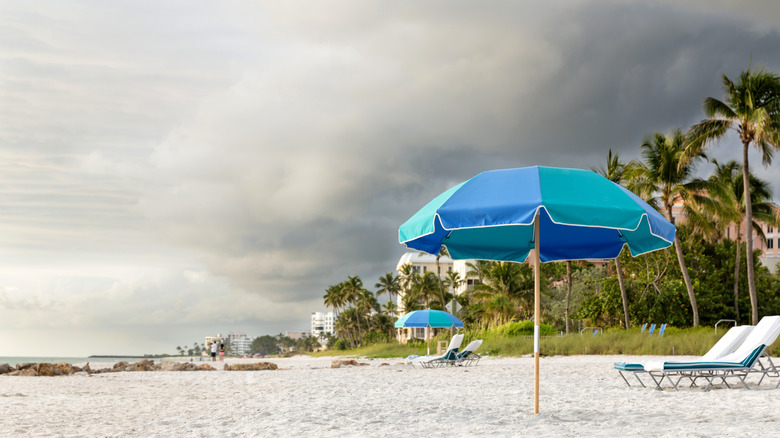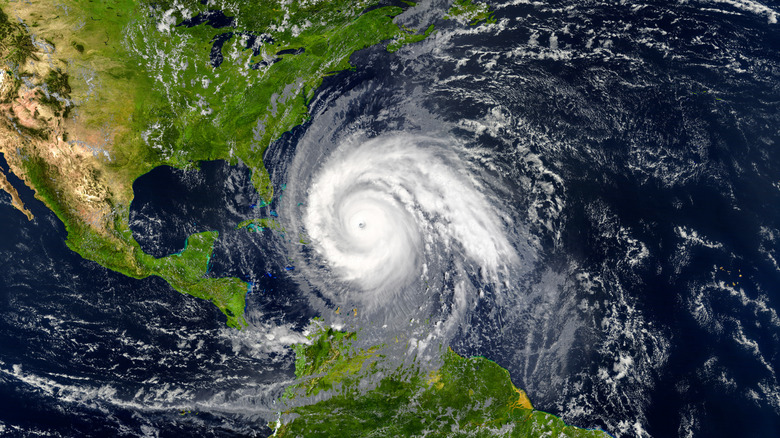How El Niño And La Niña Can Impact Your Florida Vacation
Florida has everything for the ultimate vacation, from beach towns that rival the Caribbean to one-of-a-kind parks with dazzling underground caverns. The Sunshine State's peak season is from mid-December to April — this is when people from northern states and Canada fly down to escape the winter. The months of June, July, and August usually see fewer crowds. While Florida weather is generally predictable, there are specific events to keep an eye out for. When El Niño and La Niña are present, expect to see some weather changes.
You've likely seen the names El Niño and La Niña in news headlines. These are two natural phenomena that contribute to the El Niño-Southern Oscillation (ENSO). This climate cycle originates in the Pacific and affects weather on a global scale. Each occurrence tends to last between nine and 12 months, usually showing the first signs of a shift in the spring and reaching its peak activity in autumn or winter. Vacationing in Florida during El Niño may not affect your experience all that much; in contrast, a visit during La Niña could mean an increased risk of being caught in a tropical storm or hurricane or having your trip fall through at the last moment.
El Niño manifests through warmer-than-average sea surface temperatures in the Pacific, with wind shear being particularly affected. This shift in wind speed and direction makes it more difficult for hurricanes to form in the Atlantic. While this doesn't eliminate the possibility of storms forming altogether, hurricanes are more likely to be pushed away from Florida. This is good news for travelers considering booking their trip during the September to November shoulder season to save on flights and hotels, though caution is still advised.
La Niña brings warmth but raises Florida's hurricane risk
El Niño is not without its downsides — Florida has reported colder and wetter winters, and although hurricanes are less likely, thunderstorms can be more frequent during El Niño. La Niña is its apprehensive counterpart. For southern states, La Niña means that average temperatures can rise slightly. If beaches and resorts are on your Florida itinerary, this is generally considered good news. But the presence of La Niña also means travelers need to pay extra attention to weather alerts, especially regarding heavy rain, storms, and hurricanes.
Cooler-than-average sea surface temperatures are characteristic of La Niña. This change creates atmospheric conditions that, in turn, can not only cause more hurricanes in the Atlantic but also have stronger effects. Hurricane season in Florida falls between June and November; this is a wide window of time, but tropical weather events form and come fast. Aside from storms, La Niña increases precipitation on the East Coast of the U.S., so flooding from heavy rain is not an uncommon effect in Florida.
Florida-bound travelers should avoid traveling during hurricane season altogether, but if that can't be done, then stay up to date with official reports on the ENSO status. If you decide to travel when tropical storms are more likely to form and potentially hit Florida, refresh your memory on the best ways to prepare for travel during hurricane season.

